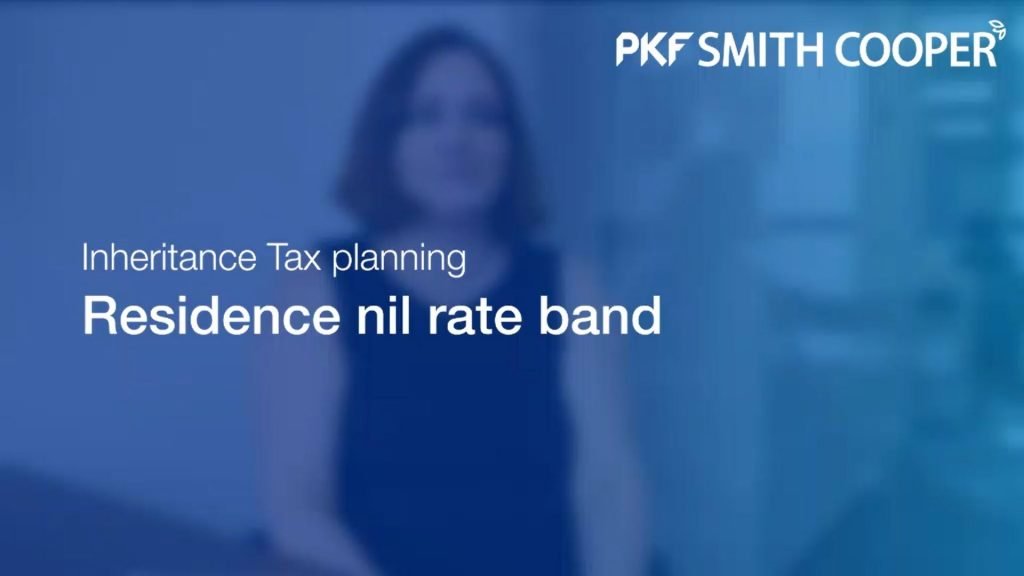The residence nil rate band (RNRB) is an additional Inheritance Tax (IHT) allowance that aims to make it easier for individuals to pass on their property without incurring IHT.

The allowance was first introduced in 2017 to counter the fact that the standard nil rate band had not increased for a number of years whilst property prices had.
It is an additional band over and above the standard nil rate band (NRB) and is currently £175,000 per individual. As IHT is currently 40%, the residence nil rate band can therefore potentially save an individual up to £70,000 in tax or a married couple up to £140,000.
Who can use the residence nil rate band relief?
There are two main conditions which have to be met to enable the relief to be claimed:
- The property being left must be what is known as a qualifying residential interest – i.e. a residential property that the individual has resided in at some point during their lifetime. It does not need to be their main residence but must have been lived in as a residence at some point.
- The property needs to be ‘closely inherited’ which in simple terms means it is being left to children or grandchildren.
Potential traps
- The RNRB band is only available on death so cannot be used against any chargeable lifetime transfers such as gifts into trust.
- The band is restricted if the Estate of the individual is over £2million and lost completely once the Estate exceeds £2.35m. When valuing the Estate, it is the gross value of the Estate before any reliefs such as APR and BPR have been applied. The band is reduced by £1 for every £2 be which the value of the Estate exceeds £2million.
- Only one property can qualify so if the value of the interest in the property is less than £175k, relief is restricted to the value of the interest.
Further complications
- Much like the standard NRB, any unused RNRB can be transferred to a surviving spouse or civil partner. If the first spouse or civil partner dies prior to the introduction of the RNRB in 2017, then the surviving spouse can claim the full transferable RNRB.
- The legislation also makes provision for people who downsize or move into residential care before their death however the downsizing must have occurred on or after 8 July 2015. Relief will continue to apply where either:
- The home is replaced with a family home of lesser value; or
- The home is not replaced but the individual still holds assets of an equivalent value In their estate.
- The property (or proceeds if downsizing relief is claimed) must be left to a direct descendant. The definition of direct descendant includes a child, grandchild and spouse or civil partner of a child or grandchild. The definition cover biological, adopted, step and foster children. However, relief is not available if property is left to other relatives such as nieces, nephews, siblings or unmarried partners. Relief is also not available if property is left into a discretionary trust even if that trust is for the benefit of children and grandchildren.
Example
Alice and Tim, a married couple, have two sons. Alice dies on 30th June 2018 when their assets were valued as follows:
| Asset | Value at 30th June 2018 |
| Family home | £700,000 |
| Holiday home | £375,000 |
| Rental Property | £225,000 |
| Investments | £425,000 |
| Personal Possessions | £350,000 |
| Total value | £2,075,000 |
Alice left her Estate to Tim so her NRB and RNRB were not utilised.
Tim subsequently died on 31st March 2021 leaving his Estate equally between his two sons. The value of Tim’s assets at that time were:
| Asset | Value at 31st March 2021 |
| Family home | £750,000 |
| Holiday home | £400,000 |
| Rental Property | £250,000 |
| Investments | £500,000 |
| Personal Possessions | £400,000 |
| Total value | £2,300,000 |
The IHT on Tim’s death will be calculated as follows:
| £ | £ | ||
| Total Value of Estate | 2,300,000 | ||
| Less: Available NRB | Standard Nil Rate Band | 325,000 | |
| Nil Rate Band transferred from spouse | 325,000 | ||
| (650,000) | |||
| Less: Available RNRB | Standard RNRB | 175,000 | |
| Transferred RNRB | 175,000 | ||
| Taper as Estate over £2m =
£2.3m-£2m |
(150,000) | ||
| (200,000) | |||
| IHT Payable on | 1,450,000 | ||
| IHT payable at 40% | 580,000 |
If instead, Alice had left her share in the family home to her two sons on her death, the IHT on Alice’s death would be:
| Estate | £350,000 | ||
| Less: NRB | (£87,500) | ||
| Less: RNRB | £125,000 | ||
| £125,000 | (£125,000) | ||
| IHT payable on | £- | ||
| IHT payable at 40% | £- |
And the IHT payable on Tim’s death would be:
| Estate | £1,925,000 | ||
| Less: NRB | (£325,000) | ||
| Less: Transferred NRB | (£237,500) | ||
| Less: RNRB | £175,000 | ||
| Less: Transferred RNRB | £- | ||
| £175,000 | (£175,000) | ||
| IHT payable on | £1,187,500 | ||
| IHT payable at 40% | £475,000 |
The total IHT due has therefore reduced by £105,000.
How we can help
Whilst the RNRB can reduce Inheritance Tax payable on death, there are a number of potential traps as summarised earlier. It is therefore important that professional advice is sought when considering Estate planning.
Watch our video below where Tax Senior Manager Natalie Pollard explains more about the residence nil rate band. This video is part of our wider Inheritance Tax planning video series, which can be viewed on our YouTube channel.





